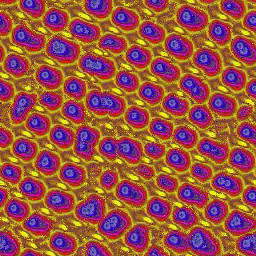Markov Random Fields and Images
Ian Jermyn
Description
Modelling the statistical behaviour of high-dimensional systems in a way that is both complex enough to capture the key dependencies, yet simple enough to allow tractable inference, is a difficult task. Markov random fields (MRFs) are a class of probability distributions that achieve this by describing long-range dependencies in terms of local interactions. They are central to the description of many systems in statistical physics, the prototype of MRFs being the Ising model.
More recently, MRFs have come to play a vital role in the analysis of high-dimensional data, in particular image data. We produce large volumes of this data in our personal lives, and it is also a vital source of information in many other domains, for example medicine, climate science, and solar physics. The sheer volume of data brings its own problems, however. With a single satellite downloading 1000GB of images per day, it is clear that use of this data requires automatic methods to extract the information contained in it. This is where statistical modelling, and MRFs in particular, come in.
MRFs are used to model both image data themselves, and their regularities ('texture'), as well as structures in the scene about which we require information, for example the space occupied by an object, or its distance from the sensor. Having created a statistical model, which might itself be learnt using statistical techniques, parameters must be estimated, and then information must be extracted about the property of interest. These steps may involve sampling from the Markov random field or optimization to find the most probable configuration. The methods and algorithms developed for these tasks are of independent mathematical interest.
More recently, Markov random fields have been combined with deep neural networks in order to increase their expressive power and to facilitate estimation.
The project could take many directions. Studies of different classes of model; of methods for parameter and model estimation; of Markov chain Monte Carlo algorithms for sampling; of graph cut or message passing algorithms for optimization; of combinations with neural networks; are some possibilities. The connection between the critical behaviour exhibited by MRFs and the central limit theorems familiar from statistics is another. Alternatively, one could focus on a particular information extraction task, study appropriate models and algorithms, and then implement the method numerically and apply it to image data.
Prerequisites
Probability II and Statistical Concepts II (in particular Bayesian methods), would both be useful.
References
As a brief introduction to MRFs and their application to image data, see:
More recently, Markov random fields have been combined with deep neural networks to increase their expressive power. See, for example:
There are many books of a more or less technical and/or more or less applied nature, as well as a large amount of material available via your favourite search engine.
